Hi everyone! I’m Dr. Arif Aziz, and in this blog post, I will tell you briefly about how to make your dog’s nails less sharp. I’m here to share some helpful tips I’ve learned from books and my experience working with dogs. If you ever have questions about your furry friend, feel free to message me anytime. I’m here to help!
To make your dog’s nails less sharp, it’s important to do a few things regularly. Trim your dog’s nails carefully, using the right tools. You can also use a nail grinder or file to smooth rough edges. If your dog doesn’t like nail trimming, you can try using nail caps to cover the tips. And don’t forget about puppies—give them plenty of chew toys to help them wear down their nails naturally.
Remember, caring for dogs’ nails is part of keeping them happy and healthy. With patience and the right techniques, you can enjoy a good time with your furry friend without worrying about scratches. If you need any advice, just reach out to me. Thanks, and be happy.
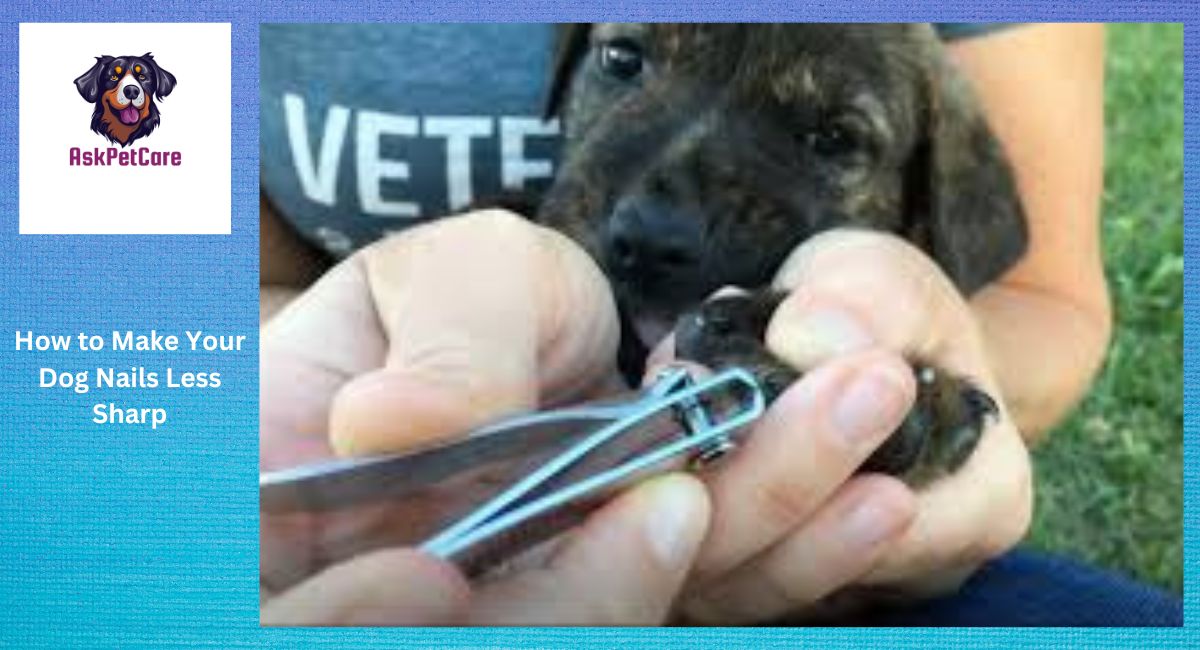
How to Make Your Dog’s Nails Less Sharp? different methods.
How To Make Puppy Nails Less Sharp.
Trimming a puppy’s nails regularly can help keep them shorter and less sharp. You can use a specially designed nail clipper for dogs, making sure to trim only the tip of the nail to avoid cutting the quick, which contains blood vessels and nerves. If you’re unsure about how to trim your puppy’s nails safely, you can ask your veterinarian or a professional groomer for guidance or have them demonstrate the proper technique.
Another option is to use a nail file or emery board to gently smooth down the edges of your puppy’s nails after trimming. This can help prevent them from feeling as sharp when your puppy accidentally scratches you or others. It’s essential to approach nail trimming and filing with patience and care to ensure your puppy feels comfortable and secure during the process. Offering treats and praise can help make nail grooming a positive experience for your puppy, encouraging them to cooperate and allowing you to keep their nails shorter and less sharp.
 How to Make Your Dog’s Nails Less Sharp
How to Make Your Dog’s Nails Less Sharp
How To Cut Dog Nails So They Aren T Sharp.
Trimming your dog’s nails to make them less sharp can be done with care and patience. Here’s a step-by-step guide:
- Gather Supplies: Get a pair of dog nail clippers, a styptic powder or pencil (to stop bleeding if you accidentally cut the quick), and treats to reward your dog.
- Choose a Comfortable Spot: Find a quiet, well-lit area where you and your dog feel relaxed. You can place a non-slip mat underneath your dog if they’re on a slippery surface.
- Get Your Dog Comfortable: Gently hold your dog’s paw and reassure them with soothing words and treats. Gradually introduce them to the nail clippers by letting them sniff and inspect them.
- Identify the Quick: Look for the pink area inside the nail called the quick. Avoid cutting into the quick, as it contains blood vessels and nerves and can cause pain and bleeding.
- Trim the Nail: Hold the paw firmly but gently, and trim the nail at a 45-degree angle, starting from the bottom and cutting in small increments. Focus on the tip of the nail, as this is where it tends to be the sharpest.
- Check for Bleeding: If you accidentally cut the quick and it starts bleeding, apply styptic powder or pencil to stop the bleeding. Give your dog a treat and comfort them if they seem distressed.
- File the Edges (Optional): Use a nail file or emery board to smooth out any rough edges and make the nails less sharp. Be gentle to avoid causing discomfort to your dog.
- Reward and Praise: After each nail is trimmed, reward your dog with praise and treats to reinforce positive behavior. Take breaks if your dog becomes anxious or restless.
- Repeat for Each Nail: Trim all the nails on one paw before moving on to the next. Take your time and be patient, as rushing can lead to accidents or stress for your dog.
- Regular Maintenance: Trim your dog’s nails regularly to prevent them from becoming too long and sharp again. Aim for once every 2-4 weeks, depending on your dog’s activity level and nail growth rate.
By following these steps and practicing gentle handling, you can effectively trim your dog’s nails to make them less sharp while keeping your furry friend comfortable and relaxed. If you’re unsure or uncomfortable trimming your dog’s nails yourself, consider seeking guidance from a professional groomer or veterinarian.
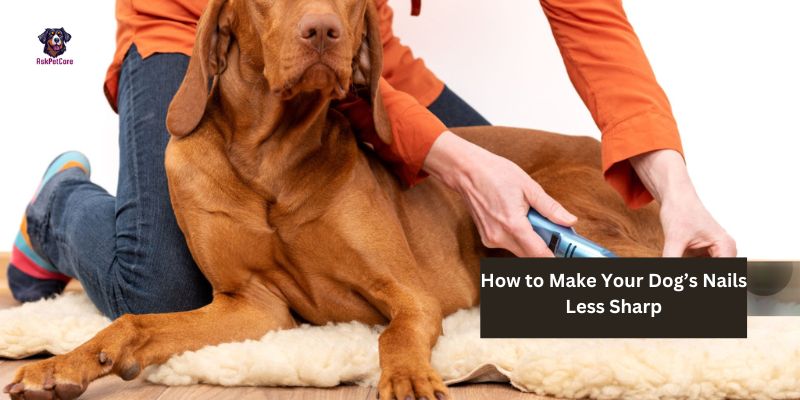
How To File Dog Nails Naturally.
Filing your dog’s nails naturally can be done using a few simple tools and techniques. Here’s how:
- Choose the Right Tools: You’ll need a nail file or emery board designed specifically for dogs. These can be found at pet stores and online. Make sure the file is smooth and not too coarse to avoid causing discomfort to your dog.
- Get Your Dog Comfortable: Find a quiet, comfortable spot where you and your dog can relax. You can sit on the floor or on a comfortable surface with your dog in your lap or lying down beside you. Use treats and soothing words to help your dog feel at ease.
- Introduce the File: Let your dog sniff and inspect the nail file to get used to it. Offer treats and praise to create a positive association with the file. Start by gently touching the file to your dog’s paw and nails without applying pressure.
- File the Nails: Hold your dog’s paw firmly but gently, and use the nail file to smooth out the sharp edges of the nails. File in one direction, moving from the bottom of the nail toward the tip. Be careful not to file too aggressively or quickly, as this can cause discomfort or stress for your dog.
- Take Breaks: If your dog becomes anxious or restless, take breaks as needed to give them time to relax. Offer treats and praise to reassure them and make the experience more enjoyable.
- File Each Nail: Work on one nail at a time, filing each nail until it feels smoother and less sharp. Pay attention to the tip of the nail, where it tends to be the sharpest. Take your time and be patient, as filing your dog’s nails naturally may take longer than using clippers.
- Monitor Your Dog’s Comfort: Watch for any signs of discomfort or sensitivity while filing your dog’s nails. If your dog pulls away or shows signs of distress, stop immediately and try again later or seek guidance from a professional groomer or veterinarian.
- Reward and Praise: After filing each nail, reward your dog with treats and praise to reinforce positive behavior. Make the experience as enjoyable as possible to encourage cooperation in the future.
By following these steps and practicing patience and gentle handling, you can file your dog’s nails naturally to make them smoother and less sharp while keeping your furry friend comfortable and relaxed.

How can I soften my dog’s nails?
Softening your dog’s nails can make trimming or filing them easier and less stressful for both you and your furry friend. Here are some simple methods to soften your dog’s nails:
- Regular Exercise: Encourage your dog to engage in regular exercise, such as walking, running, or playing. Physical activity helps wear down your dog’s nails naturally and can prevent them from becoming overly hard or sharp.
- Moisturizing Paw Balm: Apply a moisturizing paw balm or pet-safe lotion to your dog’s paw pads and nails. This can help hydrate the nails and soften them over time. Look for products specifically designed for dogs, as human products may contain ingredients that are harmful if ingested.
- Paw Soaks: Soaking your dog’s paws in warm water for a few minutes can help soften the nails and make them easier to trim or file. Fill a basin or bathtub with warm water (not too hot), and gently place your dog’s paws in the water. Let them soak for a few minutes before drying them thoroughly with a towel.
- Pet-Safe Nail Softeners: Some pet stores sell nail softening solutions specifically formulated for dogs. These products are designed to soften the nails and make them more pliable for trimming or filing. Follow the instructions on the product label carefully and consult with your veterinarian if you have any concerns.
- Regular Maintenance: Keep your dog’s nails trimmed or filed regularly to prevent them from becoming too hard or sharp. Aim for once every 2-4 weeks, depending on your dog’s activity level and nail growth rate. Regular maintenance can help keep your dog’s nails in good condition and reduce the need for more intensive softening treatments.
By incorporating these methods into your dog’s grooming routine, you can help soften their nails and make nail care a more comfortable experience for both you and your furry companion. Remember to always handle your dog’s paws gently and use pet-safe products to ensure their safety and well-being. If you’re unsure about how to soften your dog’s nails or have any concerns, consult with your veterinarian for guidance and advice tailored to your dog’s specific needs.
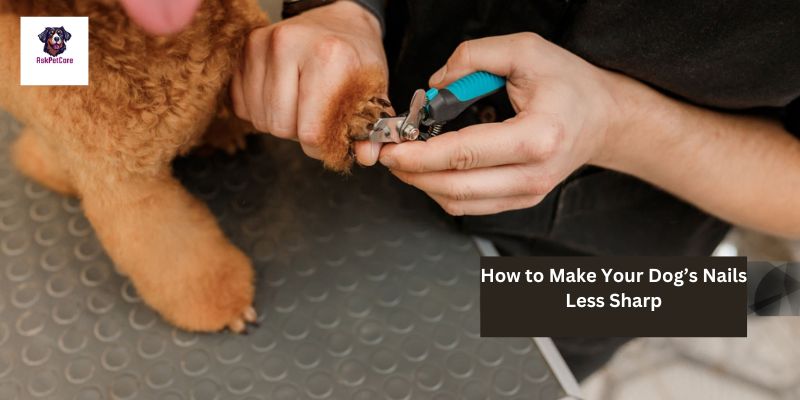
How can I reduce my dogs’ nails?
Reducing your dog’s nails involves trimming or filing them to a shorter length, which can prevent them from becoming too long, sharp, or uncomfortable for your furry friend. Here’s how you can reduce your dog’s nails:
- Trimming with Nail Clippers: Use a pair of dog nail clippers to trim the tips of your dog’s nails. Hold your dog’s paw firmly but gently, and identify the quick, which is the pink area inside the nail containing blood vessels and nerves. Trim only the tip of the nail, avoiding cutting into the quick to prevent pain and bleeding. If you’re unsure about how much to trim, it’s better to err on the side of caution and trim less rather than too much.
- Filing with Nail File: If your dog is sensitive to nail clippers or if you prefer a gentler approach, you can use a nail file or emery board to gradually reduce the length of your dog’s nails. Hold your dog’s paw steady and file the nails in one direction, moving from the bottom of the nail toward the tip. Be patient and take breaks as needed, as filing may take longer than trimming with clippers.
- Regular Maintenance: Make nail care a regular part of your dog’s grooming routine to prevent their nails from becoming too long or sharp. Aim to trim or file your dog’s nails once every 2-4 weeks, depending on their activity level and nail growth rate. Regular maintenance can help keep your dog’s nails at a comfortable length and reduce the risk of injury or discomfort.
- Positive Reinforcement: Use treats, praise, and soothing words to reassure your dog and make nail care a positive experience. Offer rewards before, during, and after trimming or filing to reinforce good behavior and help your dog feel more comfortable and cooperative.
- Consult with a Professional: If you’re unsure about how to reduce your dog’s nails safely or if your dog has particularly thick or dark nails that are challenging to trim, consider seeking guidance from a professional groomer or veterinarian. They can demonstrate the proper technique and provide personalized advice based on your dog’s specific needs.
By following these steps and practicing patience and gentle handling, you can reduce your dog’s nails safely and effectively while keeping your furry friend comfortable and happy. Remember to always prioritize your dog’s well-being and safety during nail care, and consult with a professional if you have any concerns or difficulties.
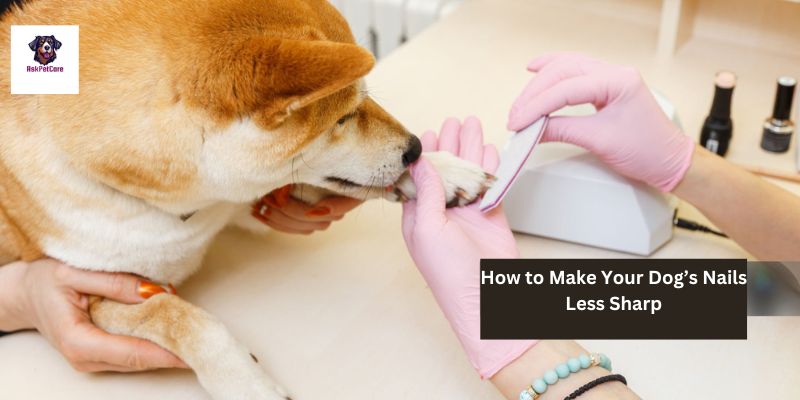
How do I calm my dog enough to cut his nails?
Calm your dog before cutting his nails by creating a relaxed environment and using positive reinforcement. Here’s how:
- Choose a Quiet Area: Find a quiet, well-lit area where you and your dog can comfortably sit together. Minimize distractions and loud noises that could startle your dog and make him anxious.
- Introduce the Nail Clippers: Allow your dog to sniff and inspect the nail clippers before using them. Offer treats and praise to create a positive association with the clippers and help your dog feel more comfortable around them.
- Start Slowly: Begin by gently touching your dog’s paws and nails without applying any pressure. Offer treats and praise to reward calm behavior and help your dog relax.
- Desensitize to Handling: Gradually increase the amount of handling your dog’s paws and nails, making sure to reward calm behavior each time. Use a gentle touch and speak to your dog in soothing tones to reassure him.
- Associate Nail Trimming with Rewards: Before attempting to cut your dog’s nails, practice holding the clippers near his paws while giving treats and praise. This helps your dog learn that good things happen when the clippers are present.
- Take Breaks: If your dog becomes anxious or restless, take breaks as needed to allow him to relax. Offer treats and praise to reassure him and make the experience more enjoyable.
- Use Distraction Techniques: Provide a favorite toy or a puzzle feeder filled with treats to keep your dog occupied and distracted while you trim his nails. This can help redirect his focus away from the nail-trimming process.
- Be Patient: Remain calm and patient throughout the process, and avoid rushing or becoming frustrated. Dogs can sense your emotions, so staying calm will help your dog feel more at ease.
By following these steps and using positive reinforcement techniques, you can help calm your dog enough to cut his nails and make the experience more comfortable and stress-free for both of you. If your dog continues to show signs of anxiety or resistance, consider seeking guidance from a professional dog trainer or behaviorist for additional support.
Dogs Nails Sharp After Trimming.
If your dog’s nails are still sharp after trimming, there could be a few reasons why this is happening. Here are some possible explanations and solutions:
- Not Trimming Enough: If you’re only trimming the very tip of your dog’s nails, they may still be sharp because the edges are not properly rounded. Try trimming a little more off the sides of the nails to achieve a smoother, rounder edge.
- Nail Clippers: The type of nail clippers you’re using could also affect the results. Some clippers may crush the nail rather than cleanly cutting it, leading to rough edges. Consider trying a different style of clippers or using a nail file to smooth out any rough spots after trimming.
- Dog’s Activity Level: If your dog is very active, their nails may naturally become sharper more quickly due to friction against hard surfaces like pavement or concrete. In this case, you may need to trim their nails more frequently to keep them blunt.
- Nail Health: Sharp nails can sometimes be a sign of poor nail health, such as brittleness or excessive dryness. Ensure your dog is getting a balanced diet with adequate nutrients to support nail health, and consider using a moisturizing paw balm to keep their nails hydrated.
- Trimming Technique: Your trimming technique may need improvement. Make sure you’re holding your dog’s paw steady but gently while trimming, and always avoid cutting into the quick, which can cause pain and bleeding.
If you’re still having trouble keeping your dog’s nails from being sharp after trimming, consider consulting with a professional groomer or veterinarian for guidance. They can provide personalized advice and demonstrate proper trimming techniques to ensure your dog’s nails are kept at a comfortable length and shape.
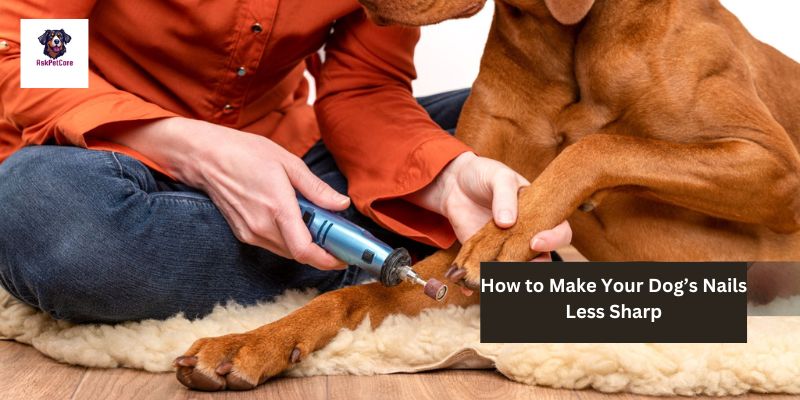
Now I explain Dog Nail Grinder.
A dog nail grinder is a grooming tool designed to trim and shape your dog’s nails by grinding them down rather than cutting them with clippers. It consists of a handheld device with a rotating abrasive head that effectively files down the nail’s length and smooths out the edges.
Using a dog nail grinder involves the following steps:
- Prepare Your Dog: Before using the grinder, acclimate your dog to the sound and sensation of the device by letting them sniff it and turning it on briefly without touching their nails. Offer treats and praise to create a positive association.
- Hold Your Dog’s Paw: Gently hold your dog’s paw in one hand, making sure they feel comfortable and secure. Speak to them in soothing tones to help keep them relaxed.
- Start Grinding: Turn on the nail grinder and gently touch it to your dog’s nail, starting with the tip. Hold the grinder at a slight angle and apply light pressure as you work your way around the nail, gradually grinding down its length.
- Monitor Progress: Keep an eye on the nail as you grind to avoid removing too much at once. Check the nail frequently to see if you’ve reached the desired length and smoothness.
- Avoid the Quick: Be careful not to grind too close to the quick, which is the pink area inside the nail containing blood vessels and nerves. Grinding into the quick can cause pain and bleeding.
- Take Breaks: If your dog becomes anxious or restless, take breaks as needed to allow them to relax. Offer treats and praise to reward calm behavior and make the experience more enjoyable.
- Finish with Smoothing: Once you’ve achieved the desired length, use the grinder to smooth out any rough edges or sharp points on the nail.
- Reward and Praise: After each nail is trimmed, reward your dog with treats and praise to reinforce positive behavior and help them associate the grooming process with a positive experience.
Using a dog nail grinder can be an effective and gentle way to keep your dog’s nails trimmed and smooth, but it’s essential to use it carefully and patiently to avoid causing discomfort or injury to your furry friend. If you’re unsure about how to use a nail grinder or have any concerns, consult with a professional groomer or veterinarian for guidance.
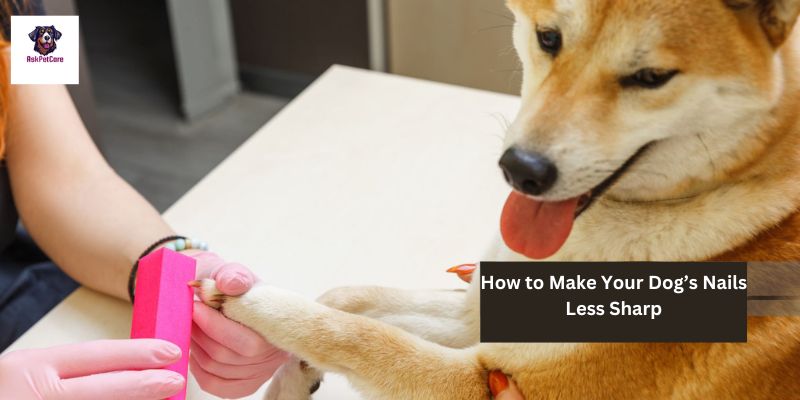
Now I explain the Dog Nail File.
A dog nail file is a grooming tool specifically designed to trim and shape your dog’s nails by filing them down rather than cutting them with clippers. It typically consists of a handle and a rough, abrasive surface made of materials like metal, glass, or sandpaper.
Using a dog nail file involves the following steps:
- Prepare Your Dog: Before using the file, make sure your dog is calm and comfortable. You may need to acclimate them to the sound and sensation of the file by letting them sniff it and touching it gently to their nails.
- Hold Your Dog’s Paw: Gently hold your dog’s paw in one hand, making sure they feel secure and relaxed. Speak to them in soothing tones to help keep them calm.
- Start Filing: Hold the file at a slight angle against your dog’s nail, and use gentle pressure to file down the length of the nail. File in one direction, moving from the bottom of the nail towards the tip, to avoid splitting or damaging the nail.
- Monitor Progress: Keep an eye on the nail as you file to ensure you’re achieving the desired length and shape. Check the nail frequently to see if you’ve removed enough material and smoothed out any rough edges.
- Avoid the Quick: Be careful not to file too close to the quick, which is the pink area inside the nail containing blood vessels and nerves. Filing into the quick can cause pain and bleeding.
- Take Breaks: If your dog becomes anxious or restless, take breaks as needed to allow them to relax. Offer treats and praise to reward calm behavior and make the experience more enjoyable.
- Finish with Smoothing: Once you’ve achieved the desired length, use the file to smooth out any rough edges or sharp points on the nail.
- Reward and Praise: After each nail is filed, reward your dog with treats and praise to reinforce positive behavior and help them associate the grooming process with a positive experience.
Using a dog nail file can be an effective and gentle way to keep your dog’s nails trimmed and smooth, but it’s essential to use it carefully and patiently to avoid causing discomfort or injury to your furry friend. If you’re unsure about how to use a nail file or have any concerns, consult with a professional groomer or veterinarian for guidance.
Understanding the Importance of Nail Care
Proper nail care is essential for your dog’s health and well-being. How to make your dog’s nails less sharp is not just about preventing scratches; it’s also about preventing potential injuries and discomfort for your furry friend. Long nails can lead to problems like ingrown nails and difficulty walking, so regular maintenance is crucial.
Trimming Your Dog’s Nails Safely
One of the most effective ways to make your dog’s nails less sharp is by trimming them regularly. Using a quality pair of dog nail clippers, carefully trim the tip of each nail, making sure not to cut too close to the quick, which can cause bleeding and pain.

Introducing Nail Grinding
Another method of how to make your dog’s nails less sharp is nail grinding. Nail grinders are electric tools that gently file down the nail’s surface, resulting in smoother edges. Many dogs find nail grinding less stressful than traditional nail clipping, making it an excellent option for pets who are anxious about nail trims.
Maintaining a Healthy Diet
Believe it or not, your dog’s diet can also play a role in the condition of their nails. A balanced diet rich in essential nutrients, including omega-3 fatty acids and biotin, can promote healthy nail growth and reduce the likelihood of brittle, sharp nails. Consult your veterinarian for dietary recommendations tailored to your dog’s specific needs.
Regular Exercise and Outdoor Activity
Regular exercise and outdoor activity can help naturally wear down your dog’s nails and prevent them from becoming excessively sharp. Take your dog for daily walks, engage in interactive play sessions, and provide opportunities for them to run and explore in safe, enclosed areas. Not only will this benefit their nail health, but it will also contribute to their overall physical and mental well-being.
Use a Scratch Mat or Scratching Post
Providing your dog with a designated scratching surface can help them naturally file down their nails and prevent them from becoming overly sharp. Place a scratch mat or scratching post in areas where your dog likes to scratch, such as near their favorite resting spots or by doorways.
Regular Paw Maintenance
In addition to trimming your dog’s nails, don’t forget to pay attention to their paw pads and surrounding fur. Keep the fur trimmed around the paw pads to prevent matting and discomfort. Regularly inspect the paw pads for any signs of irritation or injury, and address any issues promptly.
Positive Reinforcement Training
Help your dog associate nail trimming and grooming sessions with positive experiences by using rewards and praise. Offer treats, verbal praise, and gentle petting during nail trims to create a positive association with the process. This can help reduce anxiety and make nail-care sessions more enjoyable for your dog.
If you still have any problems or want to understand any point that is present in the table, you can contact me at any time without hesitation.
Tips for Making Your Dog’s Nails Less Sharp
- Trim Nails Regularly with Dog Nail Clippers
- Consider Nail Grinding for Smoother Edges
- Maintain a Balanced Diet Rich in Essential Nutrients
- Provide Regular Exercise and Outdoor Activity
- Use a Scratch Mat or Scratching Post for Natural Nail Filing
- Perform Regular Paw Maintenance, Including Fur Trimming
- Use Positive Reinforcement Training for Nail Care Sessions
- Schedule Regular Veterinary Check-ups for Nail Health
- Avoid Over-Trimming Nails to Prevent Injury
- Monitor Nail Length and Condition Between Trims
Conclusion
I hope you will learn completely how to make your dog’s nails less sharp, and this is an essential part of responsible pet ownership. By implementing a combination of nail trimming, grinding, proper nutrition, and regular exercise, you can help keep your dog’s nails healthy, comfortable, and less likely to cause harm or trouble. Remember, patience and consistency are key, and always prioritize your dog’s comfort and safety above all else. If you can’t understand any point, you can contact me without hesitation.
if you are interested in understanding the anatomy of dog claws read my article.
Here are some reference books that are considered authoritative on the topic of dog care, including nail care.
- “The Complete Dog Owner’s Manual” by Dr. Bruce Fogle
- “The Ultimate Guide to Dog Care: Everything You Need to Know to Keep Your Dog Happy and Healthy” by Amy Marder and Andrew Luescher
- How do you unsharpen a dog’s nails?
To unsharpen a dog’s nails, you can trim them using dog nail clippers or a nail grinder. Trim small amounts at a time to avoid cutting into the quick, sensitive part of the nail. You can also use a nail file to smooth out any rough edges after trimming.
- Why are my dog’s nails so sharp?
Your dog’s nails may be sharp due to natural growth and lack of wear. Dogs’ nails continuously grow, and if not trimmed regularly, the tips can become sharp. Lack of wear, especially if your dog spends most of its time indoors or on soft surfaces, can also contribute to sharp nails.
- How can I soften my dog’s nails?
You can soften your dog’s nails by trimming them regularly and using a nail file to smooth out rough edges. Additionally, providing your dog with plenty of opportunities for exercise and play on rough surfaces like concrete can naturally wear down their nails and make them softer over time.
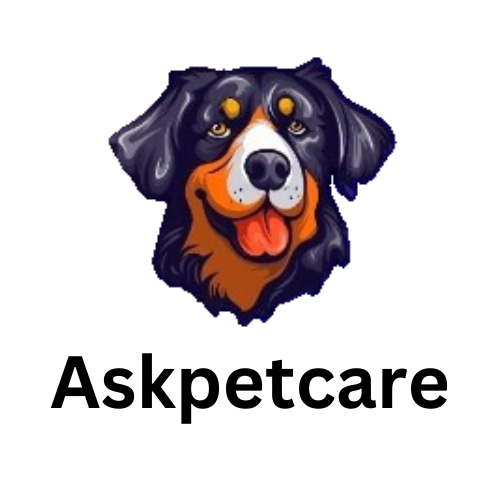

1 thought on “How to Make Your Dog’s Nails Less Sharp:Tips for Pet Owners”